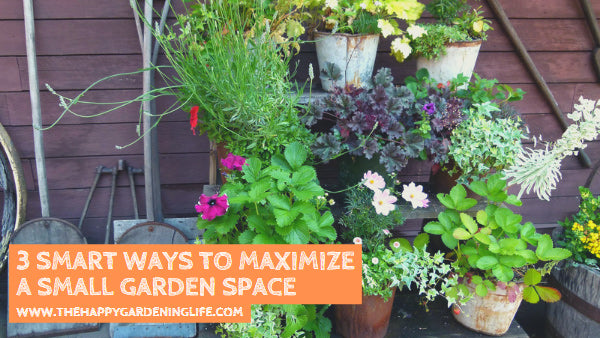
3 Smart Ways to Maximize a Small Garden Space
Share
 A small space shouldn’t hinder you from growing a garden as long as you know the best ways to maximize it. Space-saving techniques such as companion planting, vertical gardening and succession planting are all useful when you’re short on space.
A small space shouldn’t hinder you from growing a garden as long as you know the best ways to maximize it. Space-saving techniques such as companion planting, vertical gardening and succession planting are all useful when you’re short on space.
In companion planting, the idea is to plant compatible plants together not just to save space but also to help each other thrive better.
Growing companion plants can even increase yields and repel pests naturally, so it’s a great solution for small vegetable gardens.
Vertical gardening is another practical option. It works very well especially if you apply this technique consistently in your garden. Vegetables can easily be grown on trellises, wooden pallets, walls, hanging planters, stacked crates and other recycled materials in order to use space more efficiently.
Lastly, succession planting is all about growing a variety of crops by intervals. This is perfect for vegetables that quickly mature. Once the first batch has been harvested, you can immediately begin planting the next batch to achieve a continuous supply of homegrown vegetables.
Read on below to get more details about these space-efficient gardening methods. Feel free to click the social buttons to share this information online!
How to Efficiently Maximize a Small Gardening Space in 3 Ways
Interplanting
Interplanting, or companion planting, has been around for a very long time. It is the practice of planting vegetables, herbs, and/or flowers together to maximize space, flavor, or pest control. Interplanting goes hand in hand with organic gardening as well, since it contributes to natural pest controls and increased crop yields.
Vertical Gardening
Vertical gardening is training your vegetable plants to grow vertically instead of laying on the ground. This strategy can save a lot of room if used consistently throughout the garden. Use a trellis when growing cucumbers, beans, peas, and some varieties of melons and pumpkins. Not only will the trellis save space by allowing the plants to grow up it, but keeping the vegetables off the ground will ensure healthier, better-producing plants.
Succession Planting
Another great strategy for saving room in a small garden is to use succession planting. Succession planting is the technique of sowing seeds or transplanting vegetables at periodic intervals.
By staggering the planting of certain vegetables, you will have a steady supply of harvested vegetables. This works exceptionally well for fast-growing vegetables such as radishes, spinach, turnips, and some beans. When one crop of these vegetables is harvested you can go right in the same spot and plant again. You can do this repeatedly throughout the growing season for a continual crop.
Article Source: veggiegardener.com
